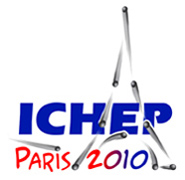Speaker
Ivan Kresimir Furic
(Department of Physics - University of Florida)
Description
The CMS detector will be upgraded during the anticipated year-long shutdowns of 2012 and 2015/2016 to enhance its physics reach. Operating after collection of few tens of fb-1 luminosity at nominal energy, the upgraded detector would have already explored the Standard Model higgs sector and TeV-scale SUSY and other new physics processes. The physics program beyond 2015 will be primarily for thorough exploration of higgs sector and any new physics phenomena discovered earlier. While most of the CMS detector is built for operations several hundred fb-1 luminosity will not only mitigate the calorimeter noise problems and data losses in the pixel system for 50 ns operation at design luminosity but also enhance CMS physics capability. The focus of the early upgrades will be on 1) improved pixel detector with four layers, one of which could be closer to the beam pipe, 2) use of higher efficiency light detectors and associated electronics for the hadron calorimeters, 3) additional cathode strip and resistive plate chambers in the forward regions to improve acceptance and redundancy for muons and 4) the trigger system built with more powerful modern processors to increase its functionality. The upgraded pixel system will provide improved b-tagging, pixel track seeding and stand-alone tracking capabilities, which will enhance CMS physics reach in exploring the higgs sector where b-jets and tau-leptons are often produced in association with the higgs boson or in its decays. The calorimeter upgrade improves the resolution of jets and provides better isolation of leptons. The forward muons upgrades will provide additional muon hit measurements to provide higher efficiency and resolution for muons in certain pseudo-rapidity regions, providing significant additional acceptance for muons at the trigger level. The enhanced trigger system will allow CMS to operate at low enough lepton, especially tau-lepton, trigger thresholds to enable the study of the higgs boson properties in both Standard Model and MSSM scenarios.
Primary author
Bolek Wyslough
(MIT)




